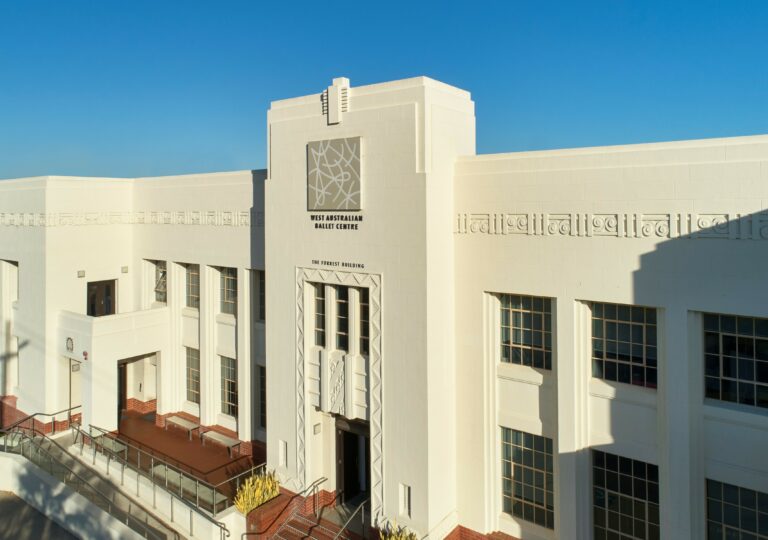
HISTORY OF WEST AUSTRALIAN BALLET
Our Story
In 1952, West Australian Ballet was established by Madame Kira Bousloff – the first ballet company formed in Australia that is still in existence today.
Madame Bousloff, a Ballerina with the Ballets Russes, had travelled to the east coast of Australia in 1938. After completing her commitment with the Ballets Russes she travelled west to Perth on holiday and fell in love with the city, declaring that the beautiful coastline reminded her of the French Riviera.
Since its formation West Australian Ballet has developed an impressive reputation for superior classical and contemporary ballet and contemporary dance of the highest level. Its repertoire continues to develop steadily; classical ballet forming the foundation for the Company’s vocabulary, combined with a distinct contemporary outlook on the artform. West Australian Ballet stages full length classical ballets, narrative ballets and shorter works, and encompasses a variety of choreographic styles.
The Company is based in Perth and resides at the West Australian Ballet Centre in Maylands. It offers an extensive program of dance throughout the year, with three to four major seasons in Perth, regional touring throughout Western Australia, choreographic workshops, an extensive education program and other community activities.
West Australian Ballet also tours nationally and internationally; past international tours include China, Japan, Indonesia and the Philippines.
West Australian Ballet is the only dance company in the state that has an official partnership with its state symphony orchestra; the West Australian Symphony Orchestra.
The West Australian Ballet Centre
The West Australian Ballet Centre is situated on the historical site of the former Blind Institute in Maylands. The history of the building site dates back to 1897 when the Victoria Institute and the Industrial School for the Blind was developed as a part of the celebrations for the 60th year of Queen Victoria’s reign.
The institute originally consisted of a complex of buildings that were gradually developed throughout the site including a factory, workshops and residential facilities. The institute was officially opened in 1900 and was the only purpose designed and built centre of its kind in Western Australia.
Chair caning was one of the first taught trades at the institute. Mat and brush making programmes were financially successful however the institute also relied on donations from the public and grants from government.
After the war the economy improved and production began to increase. The centre proved to be a significant place of assistance for service men that had lost their sight during the war. In 1923, production expanded to basket making and sea-grass furniture and soon became some of the more popular products made by the workers.
In 1932, the building was renamed The West Australian Institute and Industrial School for the Blind. By 1936, the factory had become severely overcrowded and some of the workers refused to work in the harsh conditions.
To rectify the situation, the Lotteries Commission and the government contributed more funds and the biggest building development of the sites history began in 1937.This development comprised the L-shaped building currently occupied by West Australian Ballet, and encompassed infrastructure of three previous buildings joined and combined together.
The style of the building is described at Inter-War Stripped Classical and is identified through elements such as porticos, piers, and defined plinth. The style a scale of the building is unusual for its location. The wing along Sixth Avenue is Federation Warehouse style, characterised by it hipped galvanized iron roof, protruding brick piers ad plinth.
The institute was affected again during World War Two and to support the war effort workers would work ten days for nine days pay. The factory produced equipment such as nets and baskets for the military. In 1948, the internationally renowned Helen Keller visited the institute and was shocked to discover that children were still educated in an industrial environment. She threw her support behind a proposal by the government to take control of educating blind children. By the 1960’s there were approximately 140 blind workers employed by the institute. A development of new residential building was started and included a large showroom on the ground level for the public. The centre was granted a Royal Charter in 1967 and became the Royal WA Institute for the Blind.
The mat shop and retail store, known as Cane City, was still a popular and thriving business until 1989 when it was closed because it could no longer compete with cheap imports. In 2001 the institute amalgamated with the WA Deafblind Association and formed the Senses Foundation. The institute finally closed its doors in 2004 and a decision was made to sell the premises. The building remains unoccupied for several years until WAB made the discovery.
This magnificent building has become a symbol that illustrates Perth’s short history. With its high ceilings, rustic wooded floors, classical charm and character, the building sets a perfect tone for the West Australian Ballet. The building’s disposition provides the artistic team with a creative and innovative backdrop to aid in the creation of world class productions.